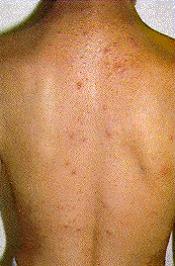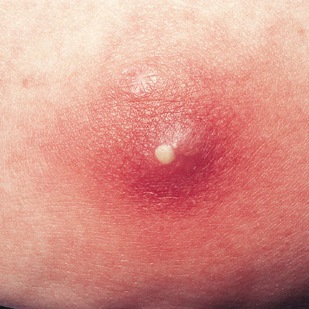
In some cases, you don’t need any treatment for skin boils, technically known as furuncles. These pus-filled bumps will often go away on their own without any treatment. However, boils can be quite painful and they may take two weeks or longer to go away on their own. They can also grow quite large, anywhere from the size of a pea to the size of a golf ball or even a baseball in some instances. Boils often occur in particularly sensitive areas, too. For all of those reasons, people often want to know how to treat skin boils. They want their boils to go away as quickly as possible and they want to relieve pain and discomfort.
What Not To Do
Let’s start with what not to do. Don’t try to squeeze or pop the boil, tempting as that might be. Don’t try to stick it with a pin or do anything else to break it or pop it. It will begin to drain on its own when it’s ready. Squeezing or poking it with a pin will probably just increase the swelling, pain, and inflammation and can lead to a serious infection.
Medical Treatment For Skin Boils
You should see a doctor if you have multiple boils if you have a boil that is more than two inches in diameter if you have a boil that is very painful, if you have a fever when you have a boil, or if your boil doesn’t go away after two weeks (1).
You should also see a doctor if you have recurring boils, even if they have been going away on their own. A doctor can help you figure out why you keep getting boils and advise you about how to prevent them in the future. You might also want to check out our page on preventing skin boils.
Your doctor may recommend warm compresses to relieve discomfort and promote drainage. If the boil is particularly large or painful, your doctor may decide to lance the boil and drain it. A doctor will do this with sterile instruments and knows how to do it safely, without spreading infection, so you should never try to do it yourself.

If the infection is very deep or cannot be completely drained, the incision may need to be packed with sterile gauze. In this case, your doctor will show you how to change the dressing at home. If the boil is in a hard-to-reach spot, you may need someone to help you with this. Keep the area clean and dry, follow your doctor’s instructions carefully and call your doctor if you develop a fever, increased redness and swelling around the area, or if it becomes increasingly painful.
Your doctor may also prescribe antibiotics for an infection. Antibiotics are not always needed, but boils are always caused by some sort of bacteria and if the infection is bad enough that you need to see a doctor, you will probably need antibiotics to clear up the infection. Make sure you take all of the antibiotics, even if your boil seems better before they are all gone. Don’t apply any type of antibacterial ointment to the area unless instructed to do so by your doctor, though.
Recommended Treatment For Skin Boils
If your boil isn’t severe enough to warrant a visit to your doctor but it is causing you some pain and you want it to heal as quickly as possible, we suggest a natural treatment for skin boils. The treatment we like is called NZ Country Manuka Oil. It contains 100% pure Manuka oil that works to quickly relieve symptoms like inflammation, sensitivity, itching, and pain. Even if you do need to see your doctor about a boil, you can ask your doctor if it is safe to use Manuka Oil in addition to whatever treatment your doctor recommends. To learn more about NZ Country Manuka Oil, just follow the link.
Additional Reading:
Boils on Face – How to treat boils on sensitive areas like the face. What to do, what not to do.
Boils on The Scalp – Why scalp boils are common, treatment options.
Ingrown Hair Boils – Information on ingrown hairs; how they sometimes cause boils, treatment, and prevention.
Boils on The Butt – Most boils in this area are pilonidal cysts. Treatment options, prevention, when to see your doctor.
Vaginal Boils – How to treat a boil on the outer area or inside the genitals.
Pictures of Boils and Carbuncles
(1)Mayo Clinic: Boils
